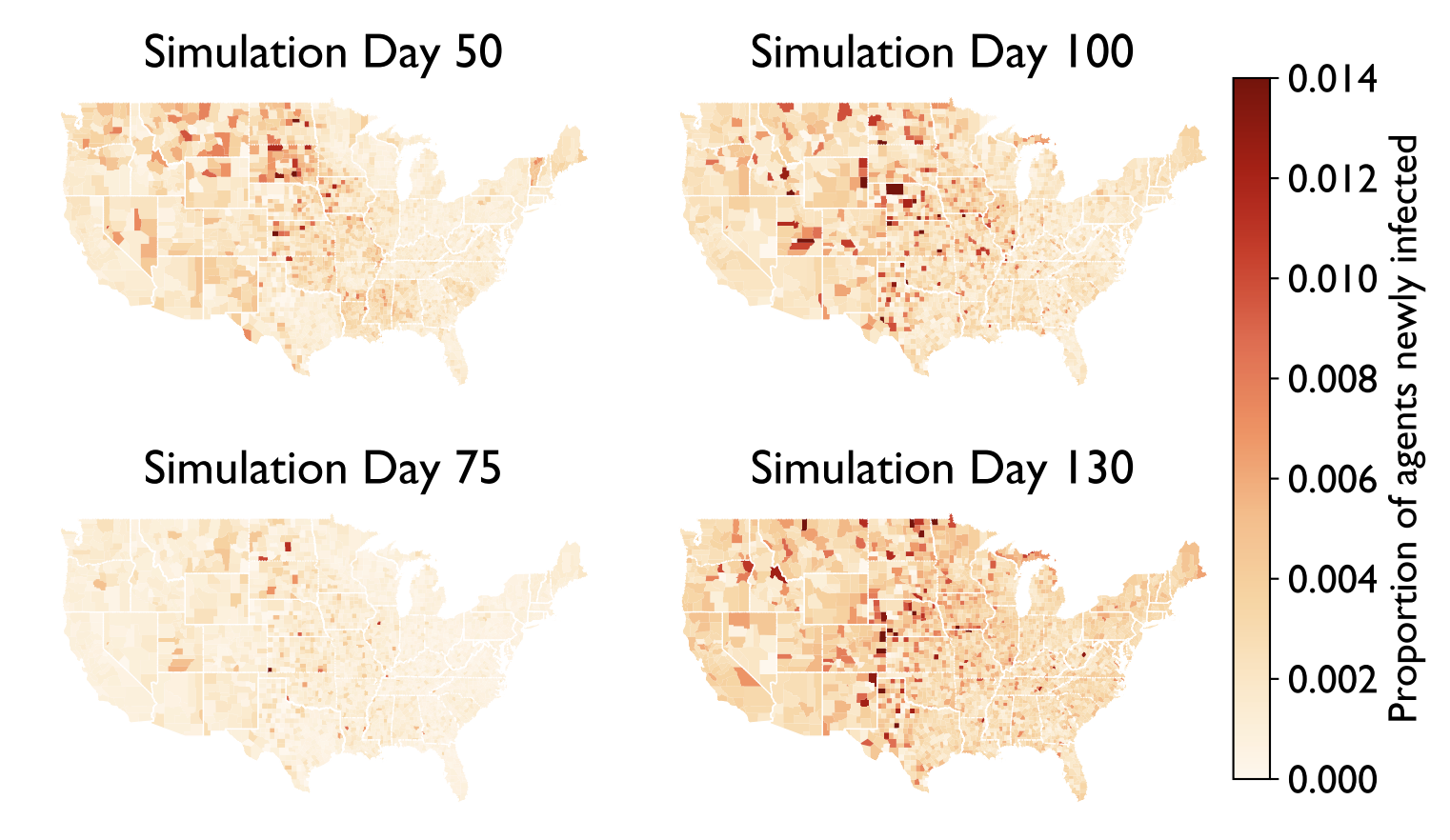Computing that serves

An EpiCast simulaiton models behavioral information and county-level disease cases over time. (Image: Joy Kitson.)
Joy Kitson’s path to predicting how pandemics spread began toward the end of her freshman year at the University of Delaware. That summer, while interpreting soil moisture data from satellites to help farmers with crop planning, it dawned on her “how we could use computer science in a more concrete way to help out people that needed the information.”
Kitson spent subsequent summers at Los Alamos and Lawrence Livermore National Laboratories working on high-performance computing (HPC). After graduating in 2020, she joined Abhinav Bhatele’s group to work on a computer science Ph.D. at the University of Maryland.
At the pandemic’s height, Bhatele’s team was working on predictions that incorporate people, their environment and interactions over time, a technique called agent-based modeling. Since then, Kitson, supported by a Department of Energy Computational Science Graduate Fellowship (DOE CSGF), has modeled how disease spreads through a population, incorporating increasingly realistic information about populations and human behavior.
At first, she had to figure out the basics of implementing the model. Then she and her colleagues started using simplified synthetic data that incorporated hypothetical groups visiting locations throughout a day, how people might interact and the infection risk were one of them contagious. Next, with researchers at the University of Virginia, Kitson integrated census data and statistical distributions of workers in various industries and their ages to help reveal patterns of movement among workplaces, schools, shopping or other activities.
The Virginia team also helped Kitson add public health insights into her model, including the effects of mask wearing, vaccinations and school closures.
The University of Maryland group also has developed deep expertise in HPC and AI methods, helping Kitson implement the models and optimize the calculations they’re built on. During a 2024 Los Alamos practicum with DOE CSGF alumnus Tim Germann, Kitson worked on EpiCast, a longstanding agent-based epidemiology model. There she contributed work that incorporated elements about how individuals behave in response to perceived risks, integrating that into EpiCast.
“Being able to incorporate behavioral insights allowed me to work on novel stuff,” Kitson says.
She appreciates the DOE CSGF for the community and annual meetings, and the opportunity to take classes in the public health department that have supported her graduate research.
In addition, she says “it is really nice that they’ve committed to supporting people to attend SC,” referring to the annual supercomputing conference that has played a central role in Kitson’s career, as both an attendee and a student volunteer. She first attended the meeting as a junior to present research she’d conducted the previous summer at Los Alamos. “I was just setting foot into a much wider world,” she says. “The different things that people are working on was just wild to see.”
In the years since, she’s participated in the conference as a student volunteer. Before the fellowship, that work provided funds to attend the meeting, but more recently she has volunteered to deepen her connection to the HPC community. She adds, “There is also an element of, ‘Oh, can I pay that forward?’”
Outside research, she enjoys playing Dungeons and Dragons, participating in puzzle hunts and swing dancing. Kitson plans to complete her Ph.D. later this year and pursue a career at a DOE national laboratory.
About the Author
Sarah Webb is science communications manager at the Krell Institute. She’s managing editor of DEIXIS: The DOE CSGF Annual and producer-host of the podcast Science in Parallel. She holds a Ph.D. in chemistry, a bachelor’s degree in German and completed a Fulbright fellowship doing organic chemistry research in Germany.





You must be logged in to post a comment.